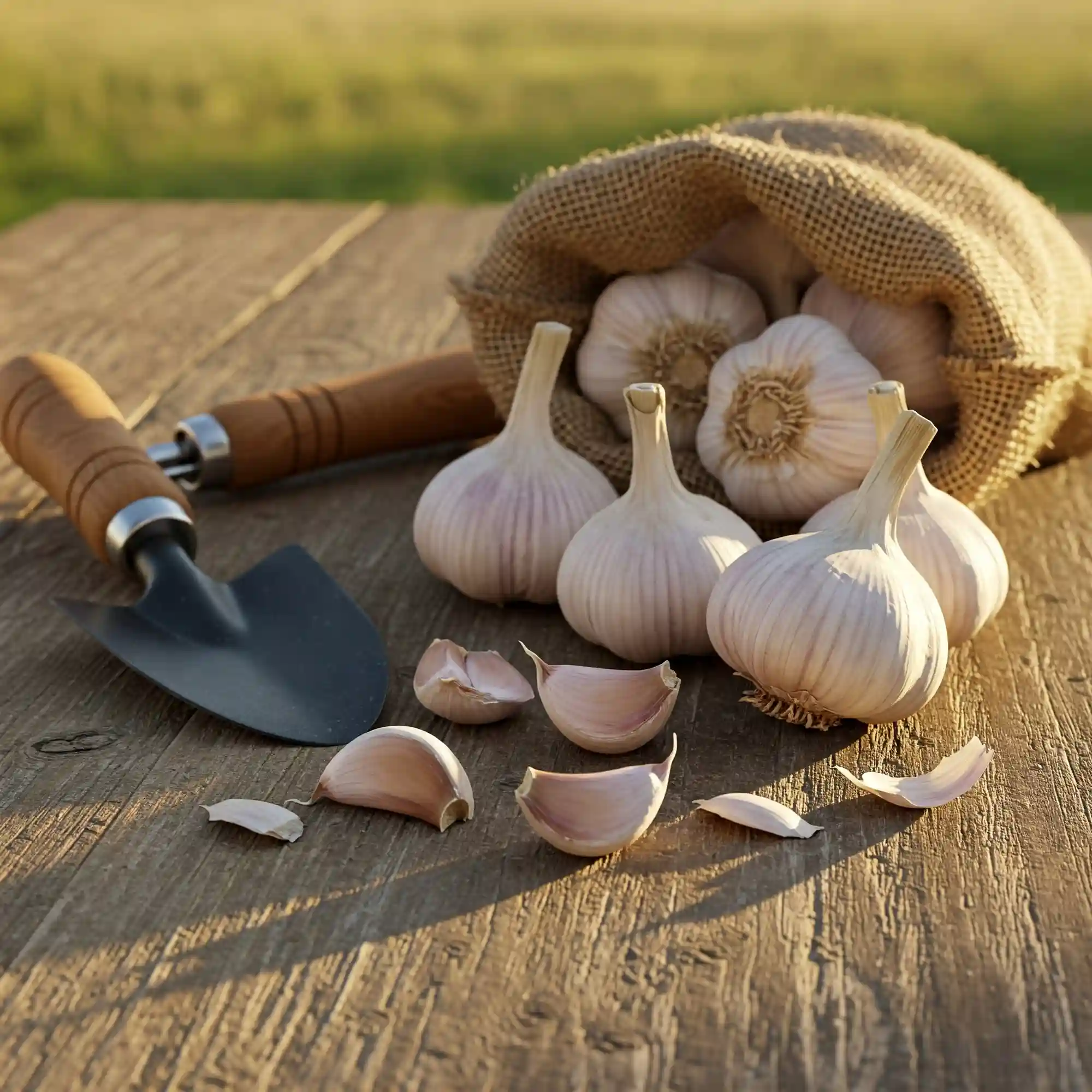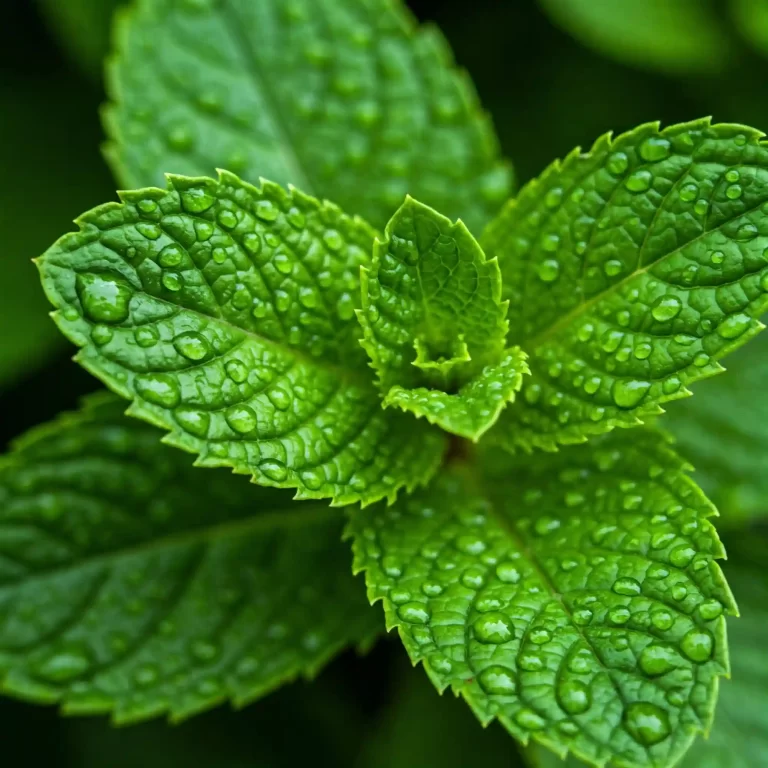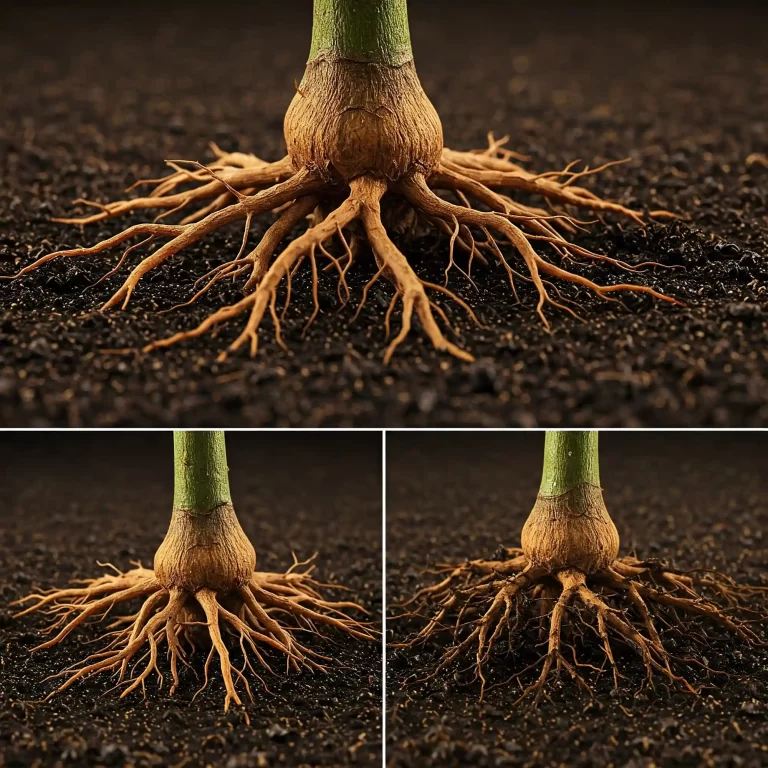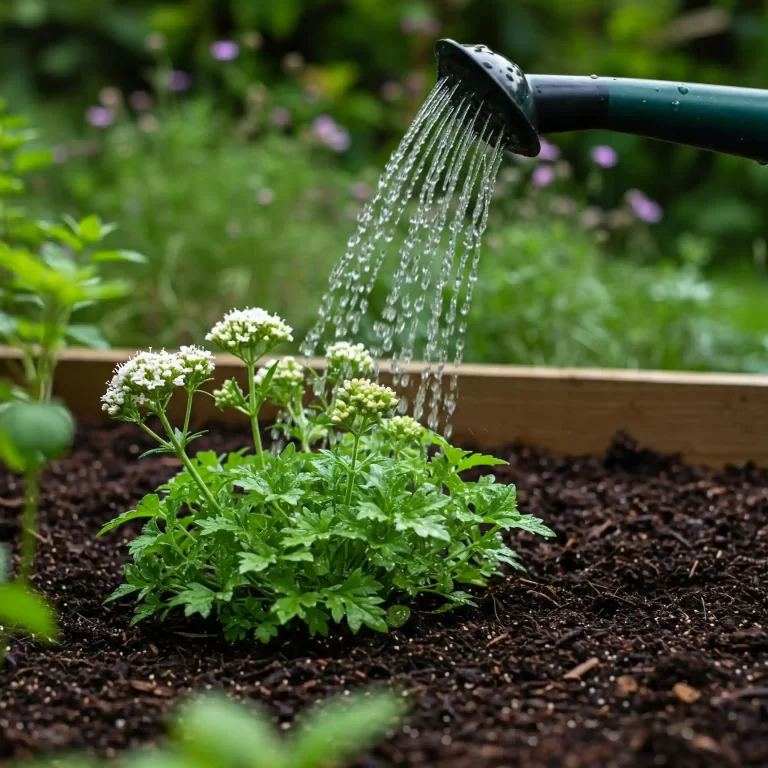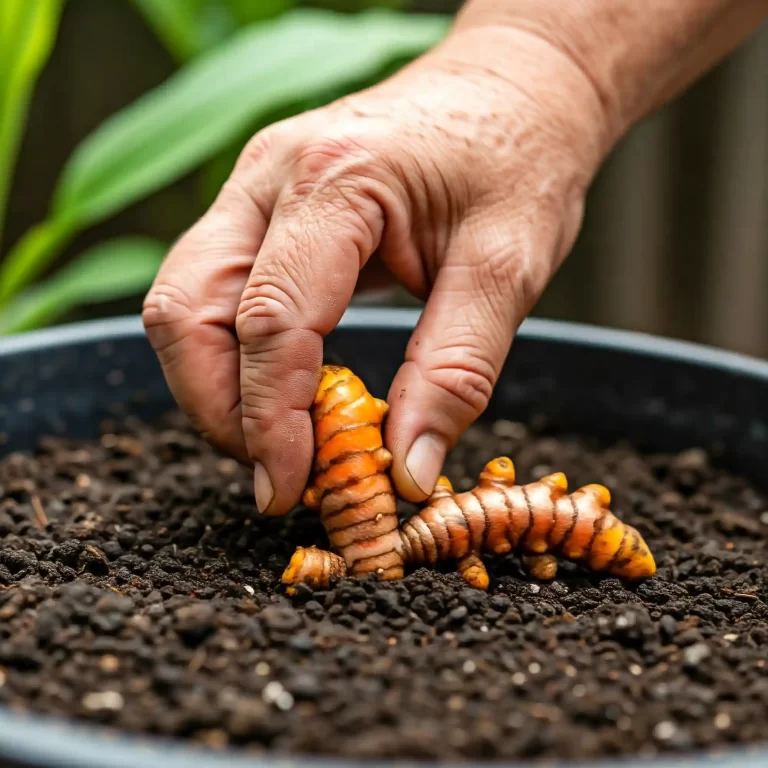Are you tired of bland, store-bought herbs that lack the vibrant punch you crave in your cooking? Do you dream of stepping out into your own garden and snipping fresh, fragrant additions to your meals? I know I did. Many gardeners, especially those juggling busy lives and full-time jobs, find it challenging to cultivate herbs that truly deliver on flavor. The disappointment of limp, tasteless herbs can be frustrating, especially when you’re trying to create culinary masterpieces. But what if I told you that growing your own intensely flavorful garlic herbs is not only possible but surprisingly easy? This guide will empower you to cultivate thriving garlic herbs, transforming your garden into a source of culinary inspiration.
Understanding Garlic as an Herb
Many people think of garlic solely as a bulb used for its pungent cloves. However, garlic offers another delicious dimension: its tender green shoots, known as scapes or garlic herbs. These scapes, which curl dramatically as they mature, offer a milder, sweeter garlic flavor than the cloves, adding a delicate garlicky note to various dishes. I remember the first time I tasted a grilled garlic scape; the subtle sweetness and gentle garlic bite were a revelation.
When you’re growing garlic specifically for its scapes, you’re essentially focusing on the plant’s vegetative growth rather than bulb development. This means that while you’ll still get a usable bulb, the primary focus is on maximizing scape production. Growing garlic for bulbs requires allowing the plant to fully mature and die back, concentrating its energy on bulb formation. In contrast, harvesting scapes encourages the plant to put out more vegetative growth, sometimes even producing a larger bulb if some scapes are left behind.
Garlic scapes offer a unique flavor profile that falls somewhere between garlic and green onions. They’re less pungent than the cloves but still deliver a distinct garlicky taste with a hint of sweetness and a fresh, grassy undertone. This makes them incredibly versatile in the kitchen. I often use them in stir-fries, pasta dishes, salads, and even as a flavorful addition to grilled meats and vegetables.
Beyond their culinary appeal, garlic scapes are also packed with nutrients. They contain allicin, the same compound found in garlic cloves responsible for many of its health benefits. This includes antioxidant, anti-inflammatory, and antimicrobial properties.
Here’s a quick comparison of garlic cloves and scapes:
| Feature | Garlic Cloves | Garlic Scapes |
| Flavor | Pungent, strong garlic flavor | Milder, sweeter garlic flavor with grassy notes |
| Texture | Firm, dense | Tender, crisp when fresh |
| Use | Primarily for flavoring and cooking | Used in various dishes, both raw and cooked |
| Nutritional Value | Rich in allicin, antioxidants, etc. | Contains allicin and other beneficial compounds |
| Growth Focus | Bulb development | Vegetative growth (scapes) |
Choosing the Right Garlic for Herb Production
Not all garlic varieties are created equal when it comes to scape production. While any garlic plant will eventually produce a scape, some varieties are more prolific and offer better flavor than others. I’ve found that hardneck garlic varieties are generally the best choice for those of you focused on growing garlic herbs.
Hardneck garlic, as the name suggests, produces a stiff, central stalk that eventually forms the scape. These varieties are typically more cold-hardy than softneck garlic, making them a great choice for gardeners in colder climates. They also tend to have a more complex flavor profile, both in the cloves and the scapes.
Here are a few popular hardneck varieties known for their excellent scape production:
- ‘Music’: This variety is known for its large bulbs and robust flavor, and it also produces abundant scapes with a mild, sweet taste.
- ‘Chesnok Red’: This heirloom variety offers a rich, complex flavor in both the cloves and the scapes, with a hint of spiciness.
- ‘German Extra Hardy’: As the name suggests, this variety is incredibly cold-hardy and produces large, flavorful scapes.
When selecting garlic for planting, it’s crucial to source high-quality seed garlic from a reputable supplier. Seed garlic is specifically grown for planting purposes and is typically free from diseases and pests. Avoid using garlic from the grocery store, as it may have been treated with growth inhibitors or may carry diseases that can affect your garden.
Understanding the difference between seed garlic and store-bought garlic is essential for successful garlic herb production. Seed garlic is carefully selected for its size, health, and vigor, ensuring a strong start for your plants. Store-bought garlic, on the other hand, is intended for consumption and may not have the same qualities.
By choosing the right garlic variety and sourcing high-quality seed garlic, you’ll set yourself up for a bountiful harvest of flavorful garlic herbs.
How to Plant Garlic Herbs
Planting garlic herbs at the right time is crucial for successful scape production. In most regions, fall planting is recommended, typically a few weeks before the first hard frost. This allows the garlic cloves to establish roots before winter sets in, giving them a head start in the spring. I’ve found that planting in October or November works well in my area, but you may need to adjust based on your specific climate.
Before planting, it’s essential to prepare the soil properly. Garlic herbs prefer well-draining soil that is rich in organic matter. I like to amend my soil with compost or well-rotted manure to improve its fertility and drainage. You can also add a balanced organic fertilizer to provide essential nutrients for the growing plants.
When planting garlic cloves, select the largest and healthiest cloves from your seed garlic. These cloves will produce the most vigorous plants and the largest scapes. Plant the cloves about 2 inches deep and 6 inches apart, with the pointed end facing up. This ensures that the shoots will emerge easily from the soil.
If you’re short on space or prefer to grow your garlic herbs in containers, you can do so successfully. Choose a pot that is at least 12 inches deep and wide to accommodate the developing bulbs and roots. Make sure the pot has drainage holes to prevent waterlogging, which can lead to rot. Use a well-draining potting mix and plant the cloves as you would in the garden.
Here are some additional tips for planting garlic herbs:
- Choose a sunny location that receives at least 6 hours of sunlight per day.
- Avoid planting garlic in areas where water tends to accumulate.
- Mulch around the plants with straw or wood chips to retain moisture and suppress weeds.
- Water regularly, especially during dry periods.
By following these planting guidelines, you’ll provide your garlic herbs with the best possible start for a bountiful harvest of flavorful scapes.
Caring for Your Growing Garlic Herbs
Once your garlic herbs are planted, consistent care is essential for healthy growth and abundant scape production. This involves proper watering, fertilization, weeding, and protection from pests and diseases. From my experience, consistent attention to these details makes all the difference in the final harvest.
Watering is crucial, especially during dry periods. Garlic herbs need consistent moisture to thrive, but it’s important to avoid overwatering, which can lead to bulb rot. I recommend watering deeply once a week, or more frequently during hot, dry weather. You can check the soil moisture by inserting your finger about an inch into the soil. If it feels dry, it’s time to water.1
Fertilizing your garlic herbs will provide them with the necessary nutrients for optimal growth. I prefer to use organic fertilizers, such as compost tea or well-rotted manure, which provide a slow release of nutrients and improve soil health. Avoid over-fertilizing, as this can lead to excessive foliage growth and reduced bulb size.
Weeding is an important part of garlic herb care, as weeds can compete with your plants for water and nutrients. I like to mulch around my garlic plants with straw or wood chips, which helps to suppress weeds and retain moisture.
Protecting your garlic herbs from pests and diseases is also essential. Common pests include onion maggots and bulb mites, while fungal diseases like white rot and rust can also affect garlic. I recommend using organic pest control methods whenever possible, such as handpicking pests or using natural sprays like neem oil.
Here are some additional tips for caring for your growing garlic herbs:
- Monitor your plants regularly for signs of pests or diseases.
- Remove any yellowing or damaged leaves.
- Ensure good air circulation around your plants to prevent fungal diseases.
- Rotate your garlic crops every year to prevent soilborne diseases.
By following these care guidelines, you’ll ensure that your garlic herbs thrive and produce a bountiful harvest of flavorful scapes.
How to Harvest Garlic Scapes
The arrival of garlic scapes is an exciting moment for any gardener growing garlic herbs. These tender green shoots, with their characteristic curls and delicate flavor, are a culinary delight. Knowing when and how to harvest them is key to enjoying their unique taste and maximizing your garlic crop.
When to Harvest
Timing is crucial when it comes to harvesting garlic scapes. You’ll want to harvest them when they are young and tender, before they become tough and fibrous. The ideal time is when the scapes have formed a distinct curl or loop but are still green and supple. I’ve found that waiting too long can result in scapes that are tough and have a stronger, less desirable flavor.
How to Harvest
Harvesting garlic scapes is a simple process. You can either snap them off by hand or use a sharp knife or pruning shears to cut them off. I prefer using pruning shears for a clean cut, but snapping them off works just as well. When harvesting, cut or snap the scape off close to the base of the plant, where it emerges from the leaves.
What to Do After Harvesting
After harvesting the scapes, you can enjoy them fresh in a variety of culinary creations. They can be grilled, sautéed, roasted, or even eaten raw in salads. If you have more scapes than you can use fresh, you can preserve them by pickling, freezing, or making pesto. This allows you to enjoy their unique flavor long after the growing season has ended.
Additional Tips for Harvesting Garlic Scapes:
- Harvest scapes in the morning, when they are crisp and turgid.
- Avoid harvesting scapes during the heat of the day, as they may be wilted.
- Don’t be afraid to harvest scapes multiple times during the growing season. This can actually encourage the plant to produce more scapes.
- If you miss the window for harvesting scapes, don’t worry. You can still use the garlic bulbs, although they may be smaller than if you had harvested the scapes.
By following these simple tips, you can enjoy a bountiful harvest of delicious garlic scapes and add a unique touch to your culinary creations.
Using and Storing Garlic Scapes
Garlic scapes are a versatile ingredient that can be used in a variety of ways in the kitchen. Their mild, garlicky flavor makes them a great addition to both raw and cooked dishes. I find their versatility particularly appealing, as they can add a subtle garlicky note without overpowering other flavors.
Culinary Uses
Fresh garlic scapes can be used in a variety of culinary applications. Here are a few ideas:
- Grilled: Grilling scapes brings out their sweetness and adds a smoky char. Simply toss them with olive oil, salt, and pepper, and grill them over medium heat until tender.
- Sautéed: Sautéed scapes make a great addition to stir-fries, pasta dishes, and omelets. Simply chop them and sauté them in olive oil or butter until tender.
- Roasted: Roasting scapes alongside other vegetables brings out their sweetness and creates a delicious side dish.
- Raw: Raw scapes can be used in salads, dips, and as a garnish. Their mild flavor adds a subtle garlicky note without being overpowering.
- Pesto: Garlic scape pesto is a delicious alternative to traditional basil pesto. Simply blend scapes with olive oil, Parmesan cheese, pine nuts, and lemon juice.
Preserving Garlic Scapes
If you have more scapes than you can use fresh, you can preserve them for later use. Here are a few methods:
- Pickling: Pickled scapes make a tangy and flavorful condiment.
- Freezing: Frozen scapes can be added to cooked dishes without thawing.
- Pesto: Garlic scape pesto can be frozen or stored in the refrigerator for several weeks.
Additional Tips for Using and Storing Garlic Scapes:
- Choose scapes that are firm and crisp. Avoid scapes that are wilted or have blemishes.
- Store fresh scapes in the refrigerator for up to a week.
- When freezing scapes, blanch them first to preserve their color and flavor.
- Use pickled scapes within a year for best quality.
By using and storing garlic scapes properly, you can enjoy their unique flavor and nutritional benefits throughout the year.
Troubleshooting Common Garlic Herb Growing Problems
Even with the best care, you might encounter some challenges when growing garlic herbs. I’ve certainly had my share of gardening mishaps, and it’s all part of the learning process. Here are some common problems you might encounter and how to address them:
- Yellowing Leaves: Yellowing leaves can be a sign of several issues, including nutrient deficiency, overwatering, or disease. If the leaves are yellowing from the tips, it could indicate a lack of nitrogen. If the entire leaf is yellowing, it could be a sign of overwatering or a fungal disease. Make sure your garlic is planted in well-draining soil and that you’re not overwatering. You can also amend the soil with compost or a balanced organic fertilizer to provide essential nutrients.
- Pest Infestations: Garlic can be susceptible to pests like onion maggots and bulb mites. Onion maggots are small white larvae that feed on the roots and bulbs of garlic plants. Bulb mites are microscopic mites that can cause damage to the bulbs. To prevent pest infestations, practice crop rotation and avoid planting garlic in areas where onions or other alliums have been grown recently. You can also use organic pest control methods, such as neem oil or insecticidal soap.
- Fungal Diseases: Fungal diseases like white rot and rust can also affect garlic. White rot is a soilborne disease that can cause the bulbs to rot. Rust is a fungal disease that causes orange spots on the leaves. To prevent fungal diseases, ensure good air circulation around your plants and avoid overhead watering. You can also use organic fungicides, such as copper fungicide or sulfur.
- Small Bulb Size: If your garlic bulbs are smaller than expected, it could be due to several factors, including poor soil fertility, insufficient sunlight, or competition from weeds. Make sure your garlic is planted in well-draining soil that is rich in organic matter. You can also fertilize your plants regularly and remove any weeds that are competing for water and nutrients.
Additional Tips for Troubleshooting Garlic Herb Problems:
- Monitor your plants regularly for signs of problems.
- Identify the problem early to prevent it from spreading.
- Use organic methods whenever possible to avoid harming beneficial insects and soil microorganisms.
- Consult with your local extension office or a gardening expert for additional assistance.
By being proactive and addressing problems early, you can keep your garlic herbs healthy and productive.
Growing Garlic Herbs in Different Climates
Garlic is a hardy plant that can be grown in a wide range of climates, but there are some specific considerations for growing garlic herbs in different regions. In general, garlic prefers a cold winter and a warm summer. This means that fall planting is essential in most regions, as it allows the garlic to vernalize (experience a period of cold temperatures), which is necessary for bulb development.
Adjusting Planting Times
In colder climates, where the ground freezes solid for several months, you’ll want to plant your garlic herbs in the early fall, typically in September or October. This gives the cloves enough time to establish roots before the ground freezes. In warmer climates, where the ground doesn’t freeze or only experiences light frosts, you can plant your garlic herbs later in the fall, typically in November or December.
Protecting Garlic During Harsh Winters
In regions with harsh winters, it’s important to protect your garlic herbs from extreme cold and fluctuating temperatures. You can do this by mulching around your plants with a thick layer of straw or wood chips. This will help to insulate the soil and prevent the garlic from heaving out of the ground during freeze-thaw cycles.
Additional Tips for Growing Garlic Herbs in Different Climates:
- Choose the right variety: Select garlic varieties that are well-suited to your specific climate.
- Provide adequate drainage: Garlic herbs do not tolerate wet feet, so make sure your soil is well-draining.
- Water deeply but infrequently: Water your garlic herbs deeply when the soil is dry to the touch, but avoid overwatering.
- Fertilize regularly: Garlic herbs are heavy feeders, so fertilize them regularly with a balanced organic fertilizer.
- Monitor for pests and diseases: Keep an eye out for common garlic pests and diseases, and take action promptly if you see any signs of problems.
By following these tips, you can successfully grow garlic herbs in a variety of climates and enjoy their unique flavor and culinary versatility.
FAQ: Answering Your Garlic Herb Growing Questions
I’ve compiled a list of frequently asked questions to address any remaining queries you may have about growing garlic herbs. These questions are based on common searches and concerns I’ve encountered from fellow gardeners.
How to Grow Garlic Herbs in Raised Garden Beds for Best Results?
Raised garden beds offer several advantages for growing garlic herbs. They provide excellent drainage, which is crucial for preventing bulb rot. They also warm up more quickly in the spring, allowing for earlier planting. When growing garlic herbs in raised beds, amend the soil with plenty of compost or well-rotted manure to improve its fertility and drainage. Plant the cloves about 2 inches deep and 6 inches apart. Mulch around the plants with straw or wood chips to retain moisture and suppress weeds.
How to Grow Garlic Herbs and Harvest Garlic Scapes Effectively for Cooking?
To maximize scape production for cooking, choose a hardneck garlic variety. These varieties produce more scapes than softneck varieties. Harvest the scapes when they begin to curl or loop. This is usually about a month after the plants emerge in the spring. Cut or snap the scapes off close to the base of the plant. This will encourage the plant to produce more scapes.
How to Grow Garlic Herbs in Containers for Beginners Indoors During Winter?
Growing garlic herbs in containers indoors during winter is a great way to enjoy fresh garlic flavor year-round. Choose a pot that is at least 12 inches deep and wide. Fill the pot with a well-draining potting mix. Plant the cloves about 2 inches deep and 6 inches apart. Place the pot in a sunny location that receives at least 6 hours of sunlight per day. Water regularly, but avoid overwatering.
How to Grow Garlic Herbs Without Pesticides and Chemical Fertilizers in My Backyard Garden?
Growing garlic herbs organically is a great way to protect the environment and your health. To avoid using pesticides, practice crop rotation and companion planting. You can also use organic pest control methods, such as neem oil or insecticidal soap. To avoid using chemical fertilizers, amend your soil with compost or well-rotted manure. You can also use organic fertilizers, such as compost tea or fish emulsion.
How to Grow Garlic Herbs and Protect Them From Common Pests Like Onion Flies?
Onion flies are a common pest of garlic herbs. The larvae of these flies feed on the roots and bulbs of garlic plants, causing them to rot. To protect your garlic herbs from onion flies, practice crop rotation and companion planting. You can also use organic pest control methods, such as neem oil or insecticidal soap.
By addressing these common questions, I hope to provide you with the knowledge and confidence to grow your own garlic herbs successfully.
Conclusion
Growing your own garlic herbs can be a rewarding experience, providing you with fresh, flavorful ingredients for your culinary creations. By following the tips and techniques outlined in this guide, you can successfully cultivate garlic herbs in your own garden, regardless of your climate or experience level.
Remember, the key to success is to start with high-quality seed garlic, provide consistent care, and harvest the scapes at the right time. With a little patience and attention, you’ll be enjoying a bountiful harvest of delicious garlic herbs in no time.
So, why not give it a try? Start planning your garlic herb garden today and get ready to savor the unique flavor and culinary versatility of this wonderful herb.
